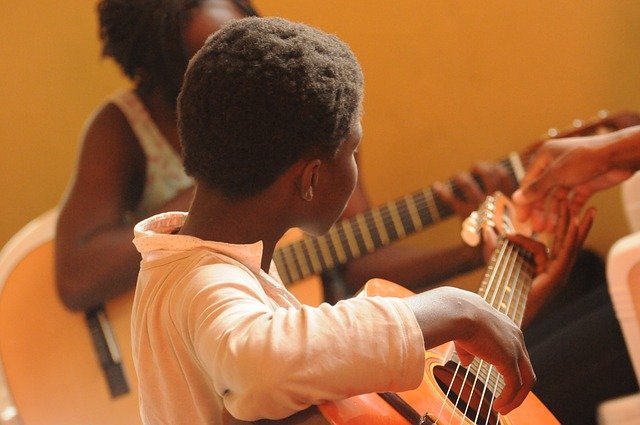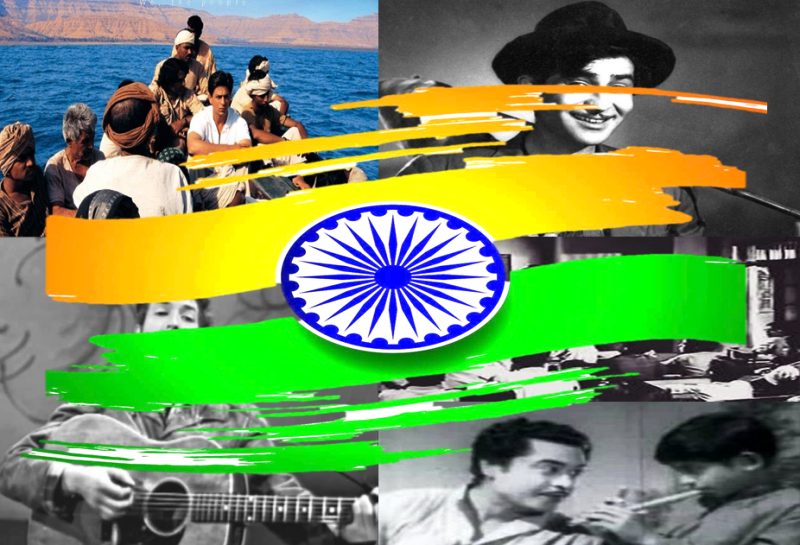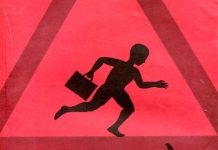“But is this song child-friendly?” This was a question that a fellow-teacher asked me during a music workshop. It came up in reference to learning about the power of music in resistance through one of Dushyant Kumar’s most well known poems ‘Ho gayi hai peer parvat si pighalni chahiye’. Dushyant Kumar, one of modern Hindi literature’s foremost voices from the 20th century, wrote about the socio-political situations of common people in the unique form of hindi ghazals and in a language that was accessible to the masses. His writings implored the reader to wake up from slumber, recognize the prevailing injustices, and urged everyone to band together in power and hope. Much after his death in 1975, Dushyant Kumar’s couplets have time and again echoed with force whenever groups of people gather to resist against the hegemonic ideals, be it in cultural forums, students’ union meetings, opinion articles, protest sites, political speeches, films etc. Dushyant Kumar – like many other artists who recognized that their art is political – is invoked in building a politics of resistance, for his words remind us to listen to each other’s struggles, acknowledge our positions of power and privilege and question the structures of injustice and inequity that operate around us.
The questions of what is suitable for which children, and whose childhood we seek to protect from the larger conflicts that surround our everyday lives, are important questions for any learning space. One look at the textbooks that are used in most schools and we will find that the teaching of subjects, especially social science, is replete with overtly political messages. Schools, in this way, are sites for indoctrination of various values. They can create deep impressions of sectarian views of the world, and reduce historically marginalized viewpoints and identities to a discriminated ‘other’. They can whitewash and simplify complex, volatile and intricate questions in ways that are convenient to the powers that seek to maintain their hegemony via formal and hidden curricula. While we might hold that children are innocent or that children should not occupy themselves with larger conflicts while in schools, rather they should prepare to learn the skills that will enable them to be part of the world economy – our strategies for evasion are often counterproductive and children do seek answers from various sources. (Krishna Kumar, 1996) Attitudes towards groups other than one’s own often reflect deep prejudice internalized in childhood and when we as adults in a learning space do not acknowledge the social predispositions that children acquire, absorb and often, internalize from the social, religious and cultural life around them, we fail to critically engage with the perceptual histories that children have internalized.
Music in a majority of formal schools is ubiquitous in its presence, yet invisibilized. The range of its presence in a school day could be anything from the oft-heard assembly songs and singing of the national anthem to the one-off hurriedly planned special assembly choir songs in honor of a chief guest, to the rare music period in the time-table. The latter, if present, is treated as an activity, not a subject or an exploration and tied to the idea of dividing learners between innately ‘gifted’ children and those who have no aptitude for it. The idea that engaging with music is the learning of an art, that it needs thinking about with regard to a curriculum, and that it allows one to make meaning of it for oneself, is absent in most formal learning spaces.
Yet, in our everyday lives, music is a malleable and flexible communicator that transcends languages and regions. It is shaped by, and in turn, it shapes our attitudes, our feelings, our thoughts and often, our actions. With multiple apps meant to maximize user attention, music has become the central currency of exchanging ideas quickly and reaching new audiences, thus making experimenting with bite-sized musical content commonplace. The language of music is composed, arranged, re-arranged, configured and remixed at an unprecedented pace and at a global scale, such that while being entertaining and agile, it also becomes the vehicle of ideas.
Why then do we as educators like for the songs that enter our school spaces to be sanitized? Why do we choose only those assembly songs that drive home a moral message such as patriotism or obedience? And in the rare occasions that a song or a poem taught in school offers possibilities for multiple interpretations, how often do we dialogue around its creation, its context, its socio-political location, its relevance, its critiques etc. and how often, instead, do we as teachers reduce it to a single authoritative interpretation sanctioned by us. Can music and poetry offer us insight into how knowledge that we take as absolute is created and transmitted? Can the arts reduce prejudices, enhance inclusion and offer us ways to respect multiple viewpoints?
Across the world, we find that the use of music as a means of expressing protest has historically involved the use of diverse forms from across cultures, ranging from the traditional to the new. (Damodaran, 2017). The history of social and political movements in India have involved the creation of various versions of nationalisms and establishing identities. In the creation of these historical narratives, a robust mass mobilization and conscientization has taken place through affecting cultural politics, much of which is shaped by music. These protest traditions have experimented with indigenous traditional forms of music, adapted music from different cultures and sometimes even subverted the grammatical structure of canonical forms. In this way, the structure and form of music, the sounds used and the silences, the time intervals and the instruments used, the languages and code-switching, the lyrics, rhythms, styles and genres, all have contained within them infinite sites for creativity and expression.
One of the earliest attempts at the formal use of music, dance, poetry and theatre for the systematic articulation of protest was imagined by the formation of Indian People’s Theatre Association in 1943. Sumangala Damodaran in recounting IPTA’s musical legacy says that IPTA’s use of music and theatre aimed to ‘craft a cultural consciousness of the Indian people that would enable them to give expression to the multilayered oppression that they suffered from, build on the rising sentiments against this oppression and mobilize them in the struggle to overthrow the oppressive colonial system and its institutions.’ This resulted in a highly varied, representative and innovative music traditions, that had the ability to transcend contexts, and became a tool to forge a dual identity – a national identity ‘rooted in its traditions and sub-national identities on one hand and identifying with international protest and working class movements on the other’. (Damodaran, 2017)
Tu zinda hai to zindagi ki jeet mein yaqeen kar,
agar kahin hai swarg to utaar la zameen par, Tu zinda hai…
If you are alive, believe in the victory of life,
If there are heavens somewhere, bring them down to the earth.
Buri hai aag pet ki, bure hain dil ke daag ye,
na dab sakenge, ek din banenge inqlaab ye.
Girenge zulm ke mahal, banenge fir naveen ghar,
agar kahin hai swarg to utaar la zameen par, Tu zinda hai…
The fire in the belly is bad, the stains on this heart are bad
These cannot be suppressed, these will turn into a revolution one day,
The palaces of tyranny will be demolished, and new homes will be built
If there are heavens somewhere, bring them down to the earth.
– a famous IPTA song written by poet Shankar Shailendra
As teachers, facilitators, parents or adults interested in goals of education that go beyond the individual cognitive skills of literacy and numeracy, imagining that art is neutral or apolitical would be a myopic view. If our learning spaces are to create an environment for enabling students to be active, engaged, humane citizens, capable of thinking for themselves and less prone to dogma and prejudices, then thinking critically is crucial. That entails, at the very least reading with and against texts, and reflecting and acting on the world with acknowledgement of the various struggles of identity, equity and justice that schools are fraught with.
A critical music classroom offers many possibilities for dialogic approaches to make sense of one’s own experiences as well as engage with questions of power, hierarchies, conflicts and equity reflexively. Take, for example, songs by collectives such as Kabir Kala Manch that combine the folk, oral tradition of street music and use lyrics from colloquial languages to communicate ideas of the anti-caste movement and Ambedkarite politics. Their songs are imbued with strands of class struggles, the perils of rampant casteism and unbridled capitalism, they assert the shared humanity and love that binds us all together. Since political power rests upon cultural hegemony, part of any revolutionary project is to create a counter hegemonic culture. Cultural resistance groups such as Kabir Kala Manch and more recent artist-groups such as Samta Kala Manch, Relaa, Yalgaar and others, have time and again been clamped down upon by the state, members arrested and accused of ‘spreading Naxal ideology of armed struggle against the govt’ or ‘inciting violence’.
In the dark times, will there also be singing?
Yes, there will be singing.
About the dark times.
– ‘Motto’ by German playwright, Bertolt Brecht
In the past few years, we have seen multiple instances of the power of songs in protest; we have seen the spirit of Faiz’s Hum Dekhenge being carried across space and time and sung in multiple languages, we have seen cultural activists use clever word-play and parodies to upturn traditional and mainstream music into powerful critique. We have also seen forms such as hip-hop and rap combine with folk forms like Oppari presented as a transportive soundscape in songs like ‘Enjoy Enjaami’, which takes listeners ‘back into a much more harmonious, almost utopian, time in the world’s history where humanity stood strong above caste, race and gender’. Arivu, the lyricist and one of the singers of this song, uses lyrics rich in word play as a cry of resistance against the plight of landless labourers. He recounts his own grandmother’s experience as a migrant labourer, when he sings, “I planted five trees/Nurtured a beautiful garden/My garden is flourishing/Yet my throat remains dry.”
Bands like Casteless Collective, Oorali Express build on real and personal experiences of privilege and marginalization to usher in a new era of protest music in India, that brings people together across languages. Protests and movements need anthems and musicians do exactly that when they come together to lend their voices to garnering attention. The Warli Revolt, “an anthem against the destruction of Aarey Forest”, is produced by Swadesi (”Swadesi is a group of socially conscious rappers, writers, music producers and performers, whose art serve as a mirror to the society.”), featuring Prakash Bhoir [a tribal chieftain and activist from the Aarey forest], MC Mawali, MC Tod Fod and 100RBH. The song that came up as a response to destroying the Aarey forest as part of the expansion of the Mumbai Metro plan asked, “Whose development?” The visual narrative of the song invokes the culture and philosophy of the Warlis, who live in harmony with nature. The words are a fusion of Warli poetry and hip hop/rap lyrics, coming together to take a defiant stand against the encroachers. The public outcry it created swept the city and forced it to be an election issue.
Individual singers and song-writers like MC Kash whose first track, I Protest, was in response to the turmoil leading to the carnage of 2010 in the Kashmir valley, use their music as a traumatic visual remembrance of the deaths that the people of Kashmir saw. While MC Kash was forced to retreat for about nine years in the absence of opportunities, financial constraints and intimidation by the Indian state, several other Kashmiri revolutionary singers and writers found their voice in music that tells the pain and trauma of loss, helplessness, anger and calling for empathy, affirming our shared humanity. Songs become ways of remembering, testimonials of history that have been silenced, sparks for starting conversation, tools of holding our citizenry accountable and visual diaries for the devastation that has been experienced. When Bella Ciao, an Italian protest song which came about in the late nineteenth century by paddy field workers to describe their pallid working conditions, is sung by Kashmiri women after the abrogation of Article 370 in 2019 [Kashmiri Bella Ciao], the notions of what it means to resist, the complex emotions involved in the use of music to survive, resist and sustain the spirit come through. Such expression is born out of the need to reclaim one’s language and give visibility to Kashmiri women’s voices at a time when state surveillance and suppression was at its peak.
Zoon te aftaab
Qabran manz travikh, wounukh yim che namoulum afraad
Aes ne ye maanaan,
Har doh chi wouthan
Alam hyath chi pakaan kaeshir shahsawar
Our budding roses
Our moons and our suns
Were put in mass graves as unidentified people
We do not accept this
Everyday, we get up
Holding flags of remembrance, Kashmiris are marching on
– lines from Kashmiri Bella Ciao, by Zanaan Wanaan (“a collective of Kashmiri women writing and singing their stories of resistance”)
In a recent dialogue held with students in a University on what they think of the place of music when voices are deliberately silenced, a student responded to some of these songs, “I cannot sit still knowing that this is what someone else is going through. I feel as though it is my responsibility to do more, to learn more, to recognize the pain and strength of their experiences, and acknowledge my position to affect it in some way.”
This is perhaps the promise of a critical pedagogy music classroom.
Ragini is an educator and is currently working as a Research Associate with the Interest Group on Compassion, Dialogue, and Justice at Azim Premji University, Bangalore. Her interest lies in the field of emancipatory and critical education.










